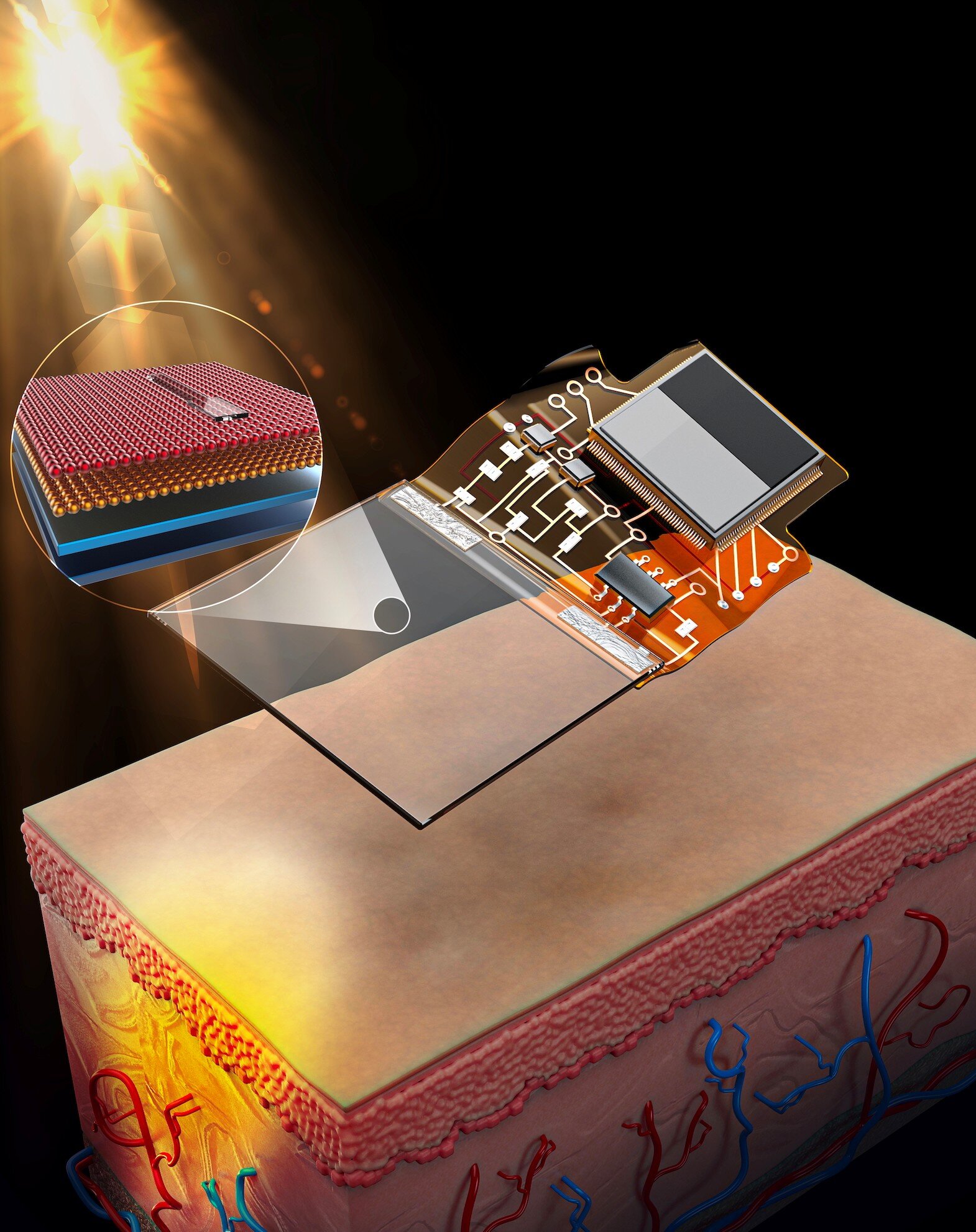Every summer, beaches and city sidewalks fill with people soaking in sunlight without realizing that an unseen radiation is quietly injuring their skin. Ultraviolet A, or UVA, does not burn the skin the way UVB does, but it penetrates more deeply and breaks DNA bonds from the inside out. The damage accumulates slowly, cell by cell, until one day a patch of skin begins dividing uncontrollably — the origin of many skin cancers. As the incidence of melanoma and other cancers climbs globally, the stakes of uncontrolled UVA exposure have never been higher.
In South Korea, a team of scientists has designed a new kind of guardian — an almost invisible, wearable UVA sensor that tracks exposure in real time and warns users before biological harm is done. Their achievement offers not just a technological novelty but a potential public health tool for millions who underestimate the risk of sunlight.
Why UVA Matters More Than Most People Think
Ultraviolet radiation is produced naturally by the Sun and artificially in tanning beds. Most UVA rays slip past glass windows and clouds and reach the skin throughout the day. Unlike a beach sunburn, UVA damage has no immediate sensory alert — no stinging, no redness — yet it alters the DNA of skin cells, compromising genetic instruction and setting the stage for malignancies decades later. In many countries, most skin cancer diagnoses trace back to this slow, invisible overexposure.
People can reduce some risk with clothing, hats, and sunscreens, but protection is rarely consistent. Sunscreen wears off. A walk turns into an hour. Glass buildings let UVA pass. What has been missing is an everyday device that can say, silently and objectively: you are approaching harm — stop now.
Engineering a Sensor Meant to Be Forgotten Until It Warns You
The new device, described in Science Advances, is not a bulky gadget strapped to the body. It is built layer by layer on a piece of glass, using oxide semiconductors that are transparent and specifically responsive only to UVA light. The electrical wiring is made from indium tin oxide — also transparent — so the entire device is nearly invisible, suitable for integration into things people already wear: glasses, watch bands, or even adhesive skin patches.
Opacity has long been a major barrier for UVA sensing. Traditional detectors block light and distort vision or comfort. The South Korean device disappears into its host surface, which means it can live in daily life without asking for attention until the moment a warning matters.
The Device That Thinks With You, Not for You
Raw sensing is insufficient without interpretation. To make the device practical, the team linked it to a tiny circuit board equipped with an amplifier and a Bluetooth module. The amplifier strengthens weak UVA signals; the Bluetooth chip sends them instantly to a smartphone. There, a simple program calculates cumulative UVA dose and alerts the wearer once exposure has reached 80 percent of the level known to cause sunburn based on medical thresholds.
In outdoor experiments on both clear and cloudy days, the sensor matched commercial reference instruments — the kind used in professional UV monitoring. The readings did not lag, lose precision, or drop data in transmission. Perhaps most encouragingly, the prototype behaved the same on the move, showing that the technology is not confined to controlled laboratory conditions.
Toward Everyday Prevention, Not After-the-Fact Diagnosis
The importance of the research is not only technical. It represents a shift from treating skin cancer after it forms to preventing the cellular injuries that lead to it. A person may not remember to reapply sunscreen on time, but a silent wearable that vibrates or sends a message when the danger threshold is near could change behaviour at the right moment. Health technology is most powerful not when it cures but when it intervenes before harm accumulates.
The researchers emphasize that the system is not yet commercial. It must go through extended field testing: sweat, dust, bending, long-term storage, and daily wear could create stresses the prototype has not yet endured. The team also aims to reduce the size of the electronics so it can be fully embedded in lightweight, unobtrusive devices.
The Future of Skin Protection Could Be Invisible
If refined and miniaturized, this sensor could be incorporated into eyeglass lenses for office workers bathed in indirect sun, into smartwatches worn by runners, or into thin patches for children playing outdoors. The same architecture could later be adapted to monitor other invisible environmental risks — ozone, pollution, or even biochemical markers on skin.
For now, the study closes a technological gap: we have long known that UVA causes slow, silent biological injury, but we lacked a comfortable tool that warns before damage crosses a critical line. With this invention, the invisible enemy becomes measurable, and therefore preventable. In a world where ultraviolet light is relentless and human habits are slow to change, a transparent device that quietly says “enough” might save lives not with drama, but with timing.
More information: Yu Bin Kim et al, Transparent UVA photodetectors based on oxide semiconductors for real-time wearable skin protection monitoring, Science Advances (2025). DOI: 10.1126/sciadv.aea7218






